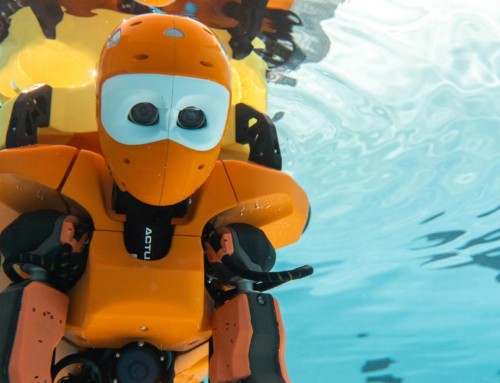[ad_1]

Robot enthusiasts were sending up cheers this month to the team advancing Atlas into an even more human-like walker through obstacles including a bunch of cinder blocks and a balance beam. They have turned Atlas into the very credible hulk, who wins the spotlight with its display of walking, which was recorded May 1.
The video is “IHMC Atlas Autonomous Path Planning Across Narrow Terrain.” Don’t miss the key word “narrow.” This is why the walk is being eyed as a big deal.
Narrow terrain is difficult due to the need to do tricky cross-over steps, tricky, in that there is limited range of motion in the hip joint, said the video notes. There was “a small polygon of support when one foot is directly in front of the other.”
Unsurprisingly, viewer comments were in the superlatives, calling the walking excellent and amazing. One appreciative video watcher expanded, saying “This atlas design has got many things right…the design of the hips, elimination of the huge gap between the legs, its ability to now ‘cat walk’. Very good indeed.”
Jerry Pratt, a senior research scientist at IHMC Robotics, was quoted by Peter Holley in The Washington Post.
“If you think about everywhere a human go can go it’s really incredible. We can climb mountains or go into caves or hike through snow or climb stairs.” And why not: (1) the human foot is only about three to four inches wide; (2) relatively small, narrow feet allow us to move around tight obstacles, step over barriers, all while supporting a higher center of mass that boosts us far off the ground.
The team had those moves around tight obstacles in mind for Atlas, the robot built by Boston Dynamics. The control, perception and planning algorithms were by IHMC Robotics. IHMC stands for Institute for Human and Machine Cognition, in Pensacola, Florida.
(What’s their claim to fame: research “pushing the envelope of what is possible in the domain of robotics.” It is an interdisciplinary group with expertise in areas such as engineering, computer science, mathematics, physics and interface design.)
The robot senses terrain with LIDAR and builds a map of planar regions, said the video notes. It walks across objects including suspended wooden planks and wobbly cinder blocks.
I Programmer remarked that “the robot is making all the decisions about where and how to place its feet.”
The path-planning algorithm plans footsteps across the planar regions to a goal location, specified by an operator.
The robot is about 50 percent successful over this type of terrain. What’s next? The team has thoughts on how to raise the success rate. As for this Atlas in real-world settings, Kristin Houser in Futurism said the recent showing brought it a step closer to one day filling in for humans on dangerous missions. She added, “the goal is for the robot to serve as an avatar for humans in dangerous emergency scenarios or even as they explore Mars.”
Pratt had some interest,too, in imagining this Atlas as space explorer:
“Perhaps the most intriguing setting for using bipedal humanoid robots is extraterrestrial.
“When humans colonize other planets, Pratt said, one scenario involves sending remotely operated robots ahead to develop a habitat suitable for human beings.
“Being able to send robots that look and move like us, Pratt said, would give scientists a major advantage.”
Bipedal Atlas is able to sort out where to step amidst messy rubble
© 2019 Science X Network
Citation:
Atlas is rockstar cross-stepper over tricky terrain (2019, May 11)
retrieved 11 May 2019
from https://techxplore.com/news/2019-05-atlas-rockstar-cross-stepper-tricky-terrain.html
This document is subject to copyright. Apart from any fair dealing for the purpose of private study or research, no
part may be reproduced without the written permission. The content is provided for information purposes only.
[ad_2]
Source link





Leave A Comment
You must be logged in to post a comment.